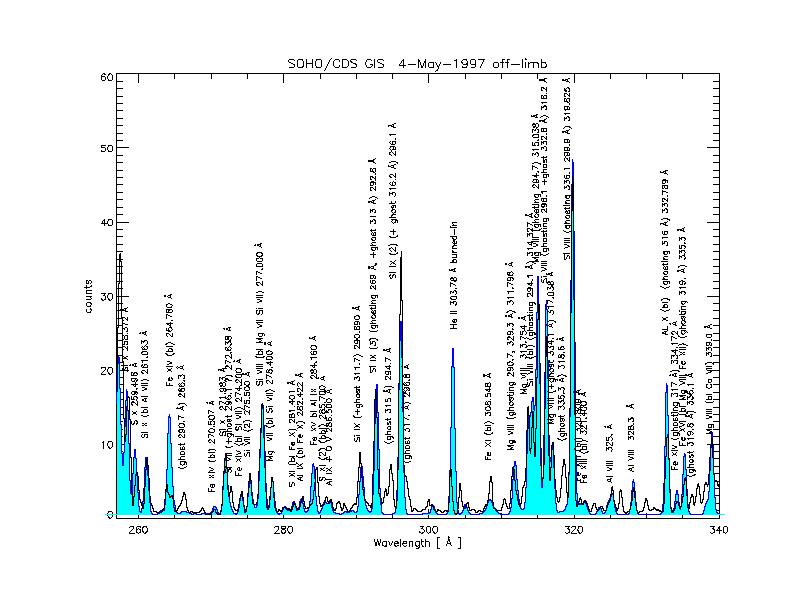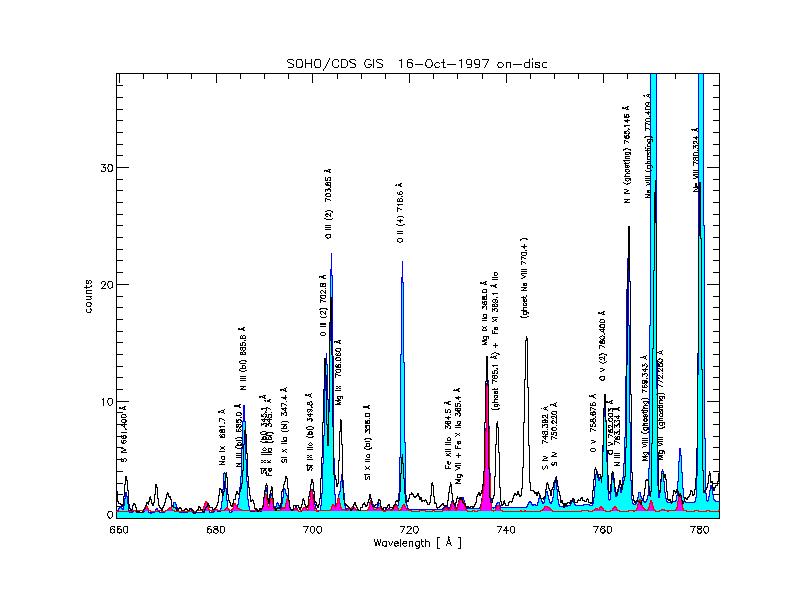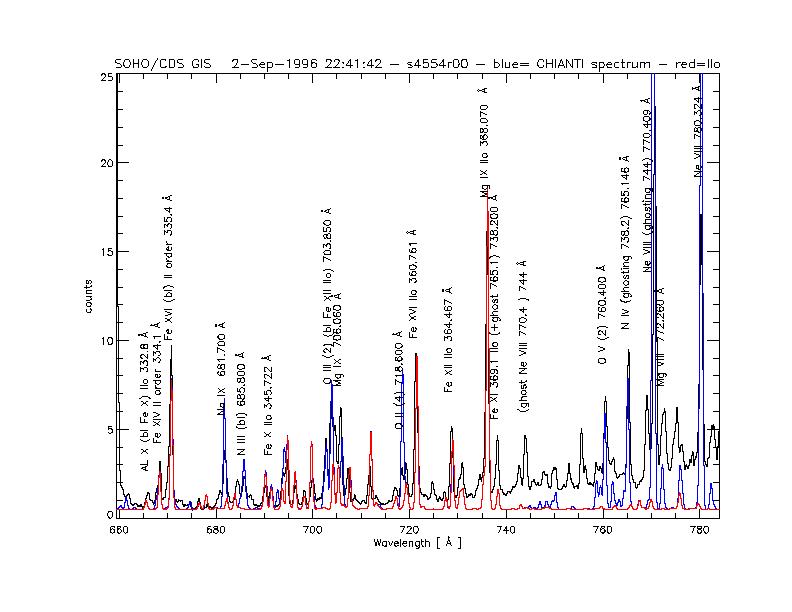Now, a list of observed spectra (black), with superimposed
CHIANTI synthetic spectra (blue +shaded areas), with second order
contributions (red +shaded areas).
Figure 28:
An on-disc observation of NIS 1, showing the few cool lines
used for the cross-calibration between the two NIS channels in first order.
Figure 29:
The NIS 1 spectrum of an off-limb quiet sun observation
(May 4th 1997), with corresponding synthetic spectrum
overlaid. These types of spectra have been mainly used for the
first order internal and cross-detector calibration.
Figure 30:
An NIS 1 spectrum after SOHO loss. Note the strong blending
of all lines, due to the broadened profiles. However, there are no
obvious indications of a change of the calibration.
Any NIS study that has extraction windows has to be analysed with
extreme care, because the background estimate is already problematic
in these full-wavelength spectra.
Figure 31: The NIS 2 spectrum of an on-disc quiet sun observation.
These types of spectra have been mainly used for the
first order internal and cross-detector calibration using cool lines.
Figure 32:
NIS 2 spectrum of an off-limb quiet sun observation.
These types of observations have been used to constrain:
a) the
NIS 2 first order calibration using coronal lines (e.g. Al XI, Ca X,
Mg X); b) the direct
second order calibration, using the same lines observed in first
order in the NIS 1 and GIS 2 channels.
Figure 33: The GIS 1 and GIS 2 spectra of an off-limb quiet sun observation
(May 4th 1997), with corresponding synthetic spectra overlaid.
These types of spectra have been mainly used for the
first order internal and cross-detector calibration.
Figure 34:
The GIS 3,4 spectra of an off-limb quiet sun observation.
These types of spectra have been mainly used for the
first order internal and cross-detector calibration,
and for the second order calibration.
Figure 35: The GIS 3 and GIS 4 spectra of an on-disc quiet sun
observation (October 16th 1997), with corresponding synthetic spectra overlaid.
These types of spectra have been mainly used for the
first order internal and cross-detector calibration.
Figure 36:
The GIS 3,4 spectra of an active region observation.
These types
of spectra were used to constrain the
second order GIS 3 sensitivity at shorter wavelengths, where a direct
cross-calibration with GIS 1 is possible, and
to constrain the
second order GIS 4 sensitivity with a direct
cross-calibration with GIS 2 and NIS 1.



